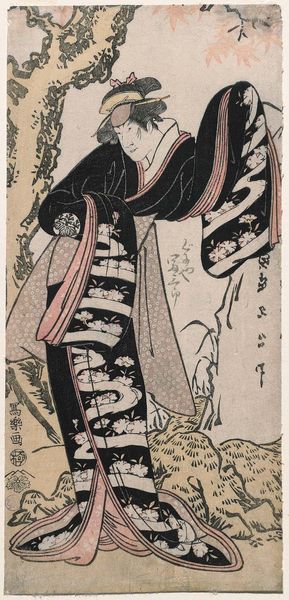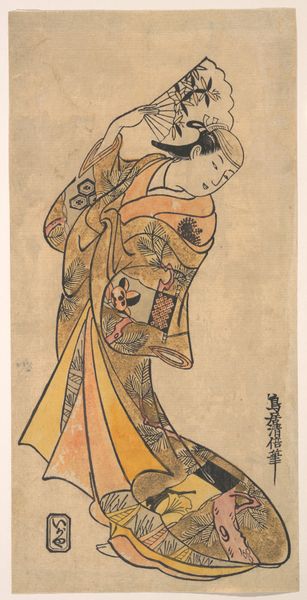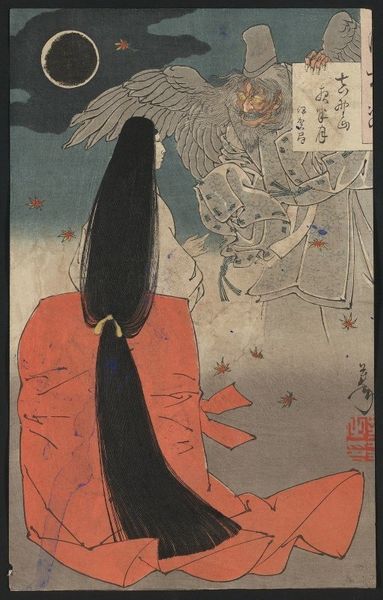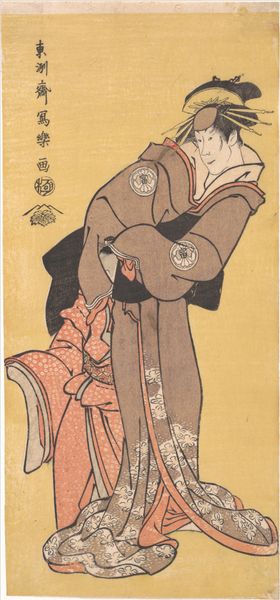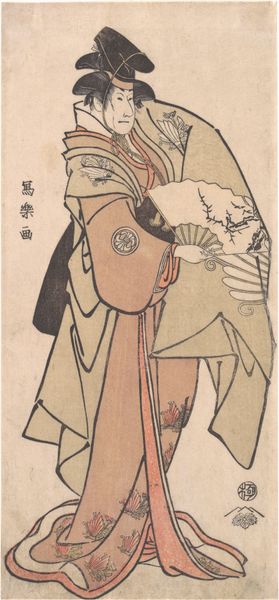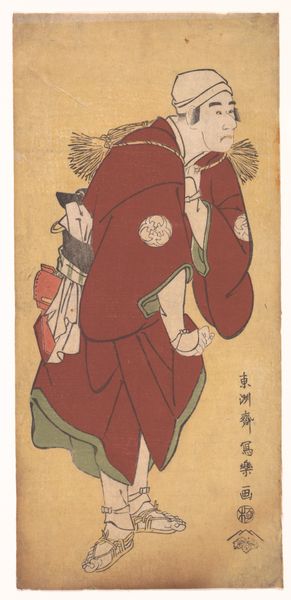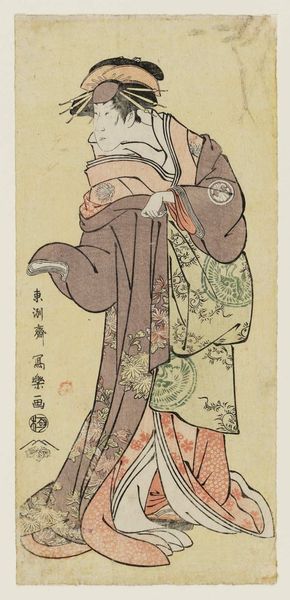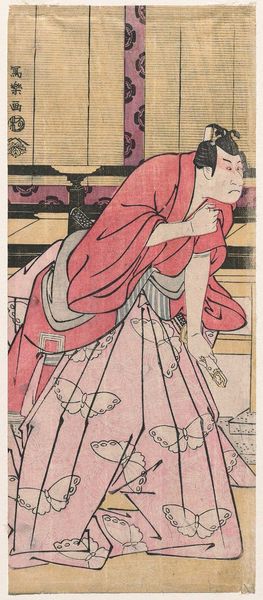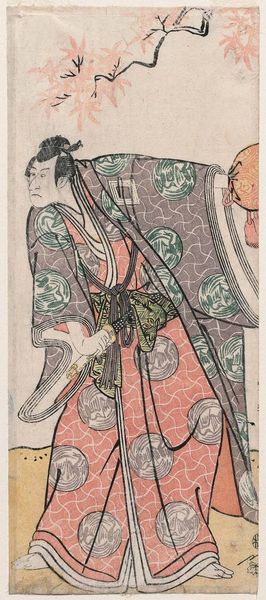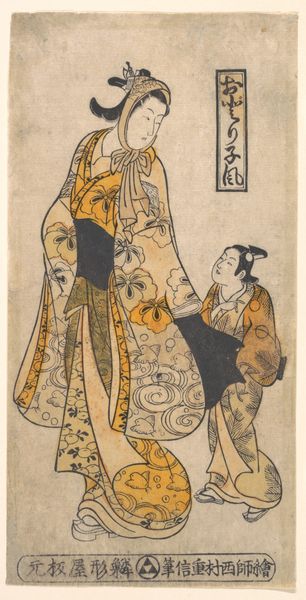
print, woodblock-print
#
portrait
# print
#
asian-art
#
ukiyo-e
#
figuration
#
woodblock-print
Copyright: Public domain
Curator: I’m immediately drawn to the drama in this portrait – he looks like he's about to deliver the best line of his life or maybe drop that tray! Editor: That intensity is really Sharaku’s trademark, isn’t it? The artist Tōshūsai Sharaku, who was active for only a brief period, produced this woodblock print in 1794. The print's full title is “Kabuki Actor Bandō Mitsugorō II as Soga Gorō Tokimune.” What strikes me about this work is the context of Kabuki itself – how it offers a stage for expressing different gendered identities. The play is centered on the Soga brothers revenge and in this scene, he’s brandishing a stand, getting ready to beat someone in revenge for his father’s murder. Curator: Right! It's a character study deeply embedded in the narrative and conventions of Kabuki theatre, and those stylized features capture something really profound. Do you think it is his grimace, the posture or the theatrical garments, or maybe all that put together which contribute to this expressivity? Editor: I think Sharaku has managed to distill an entire narrative into one explosive moment. Look at how his kimono falls off the shoulder – perhaps an accident in the woodblock carving, but suggesting so much drama to me. Kabuki offered artists and audiences an escape and Sharaku captured the psychological intensity. The fact that there are some butterfly motifs on the costume adds a surprising, ironic twist, given that butterflies often represent feminity and gentleness in the visual arts. It may represent how performance allows individuals to challenge and reshape fixed social structures and assumptions related to identity. Curator: The butterflies are fascinating. But speaking of identity, this character, Soga Gorō, was renowned for his impulsive nature and courage. Sharaku emphasizes these qualities through the actor's exaggerated features. Also, don’t forget how printmaking also became democratized. More commoners had the chance to enjoy art like these, because otherwise most paintings were restricted to the aristocracy. Editor: That’s a really good point. So, this portrait gives us a specific character, an exploration of masculinity and allows many audiences from different socio-economic status to gain access to it. Thinking about Sharaku’s ability to grab these complex elements…it feels revolutionary for his time. Curator: Absolutely, a cultural and artistic fusion frozen in a single frame. What a treat.
Comments
No comments
Be the first to comment and join the conversation on the ultimate creative platform.
